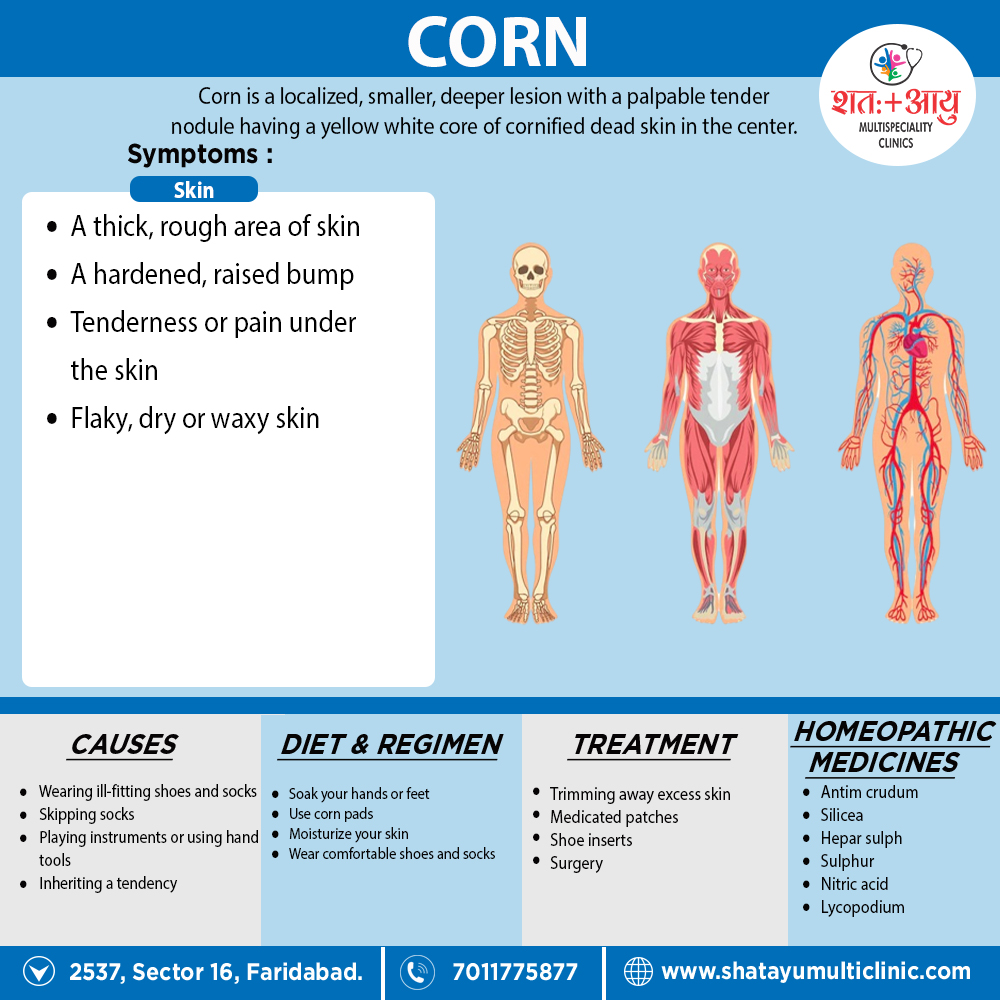Definition of Corn
Corn is a localized, smaller, deeper lesion with palpable tender nodule having a yellow white core of cornified dead skin in the center.

Corn is a localized, smaller, deeper lesion with palpable tender nodule having a yellow white core of cornified dead skin in the center.
It is thicker than a callosity and causes more concern to the patient. This occurs at the site of friction and often spontaneously disappears when the causing factor is removed.
Often corns are multiple and bilateral. Corn can be commonly hard in the sole or rarely soft corn do can occur between 4th and 5th toes due to friction of bases of adjacent proximal phalanges.[2]
Location: It is common in soles, tips of toes.
Generally, Corns are caused by friction and pressure from repeated actions. Some sources of this friction and pressure i.e.:
Two Types of corn:
It involves avoiding the repetitive actions that caused them to form. Wearing shoes that fit and using protective pads can help.
If a corn persists or becomes painful despite your self-care efforts, medical treatments can provide relief:
Homeopathy treats the person as a whole. It means that homeopathic treatment focuses on the patient as a person, as well as his pathological condition. The homeopathic medicines selected after a full individualizing examination and case-analysis.
which includes
A miasmatic tendency (predisposition/susceptibility) also often taken into account for the treatment of chronic conditions.
A homeopathy doctor tries to treat more than just the presenting symptoms. The focus is usually on what caused the disease condition? Why ‘this patient’ is sick ‘this way’?.
The disease diagnosis is important but in homeopathy, the cause of disease not just probed to the level of bacteria and viruses. Other factors like mental, emotional and physical stress that could predispose a person to illness also looked for. No a days, even modern medicine also considers a large number of diseases as psychosomatic. The correct homeopathy remedy tries to correct this disease predisposition.
The focus is not on curing the disease but to cure the person who is sick, to restore the health. If a disease pathology not very advanced, homeopathy remedies do give a hope for cure but even in incurable cases, the quality of life can greatly improved with homeopathic medicines.
The homeopathic remedies (medicines) given below indicate the therapeutic affinity but this is not a complete and definite guide to the homeopathy treatment of this condition. The symptoms listed against each homeopathic remedy may not be directly related to this disease because in homeopathy general symptoms and constitutional indications also taken into account for selecting a remedy. potency and repetition of dose by Homeopathic doctor.
So, here we describe homeopathic medicine only for reference and education purpose. Do not take medicines without consulting registered homeopathic doctor (BHMS or M.D. Homeopath).
Hepar Sulph:
Corn is a localized, smaller, deeper lesion with palpable tender nodule having a yellow white core of cornified dead skin in the center.
References: